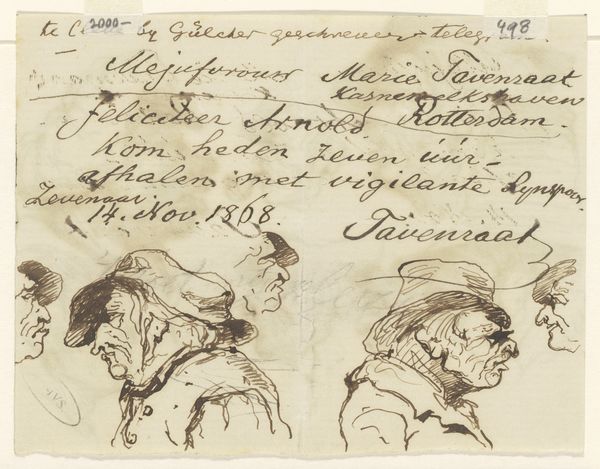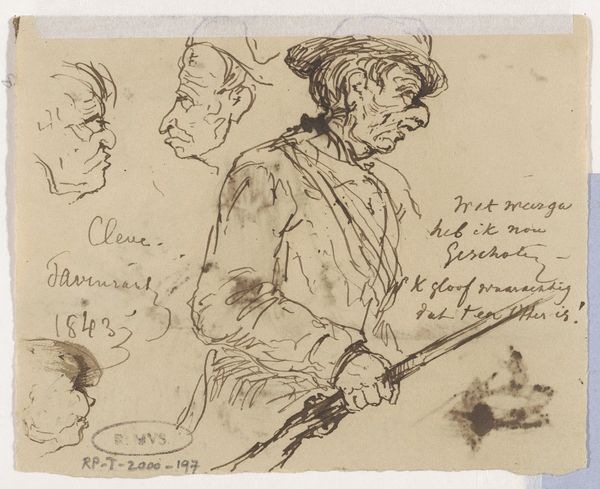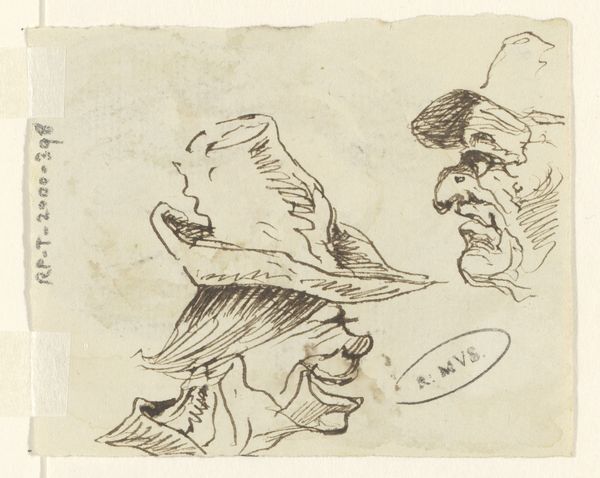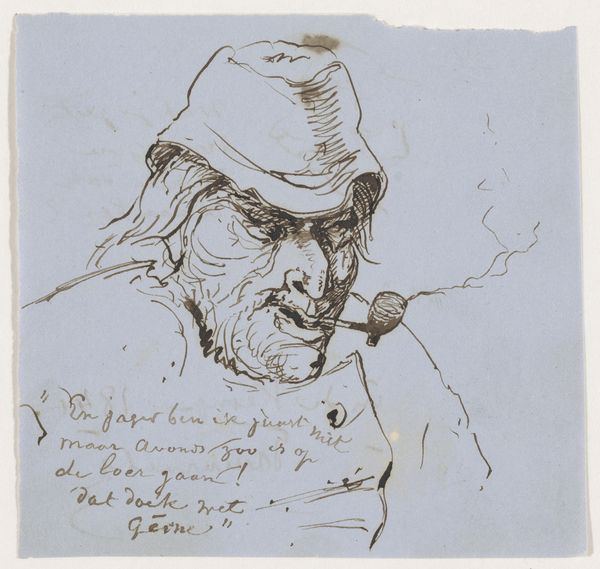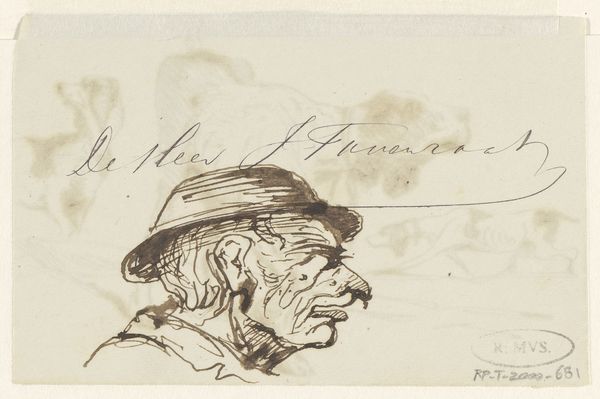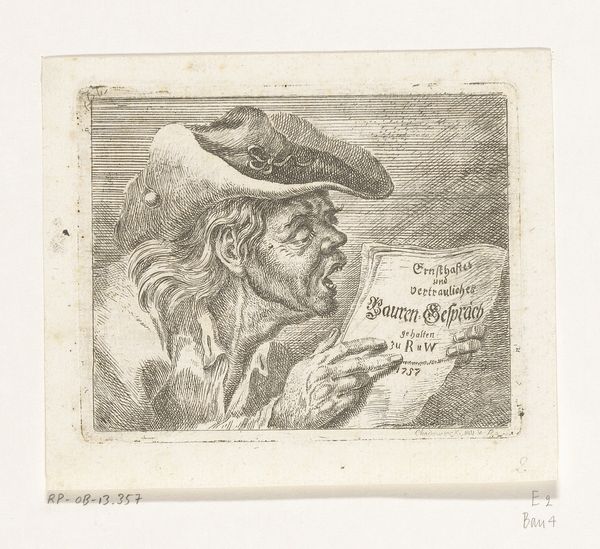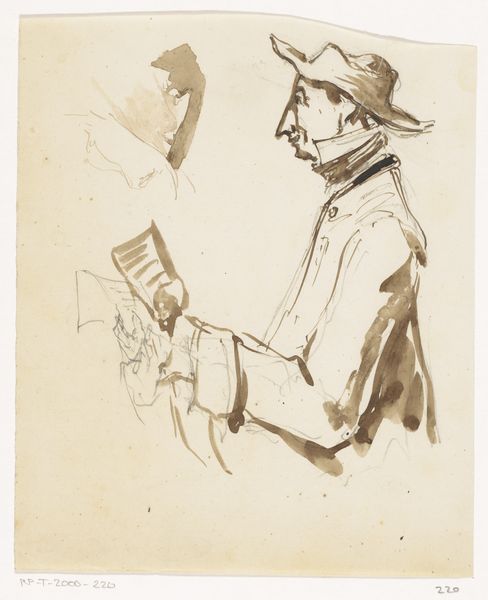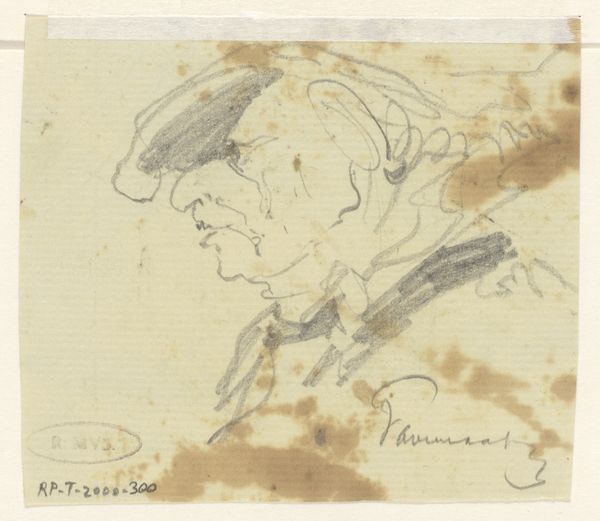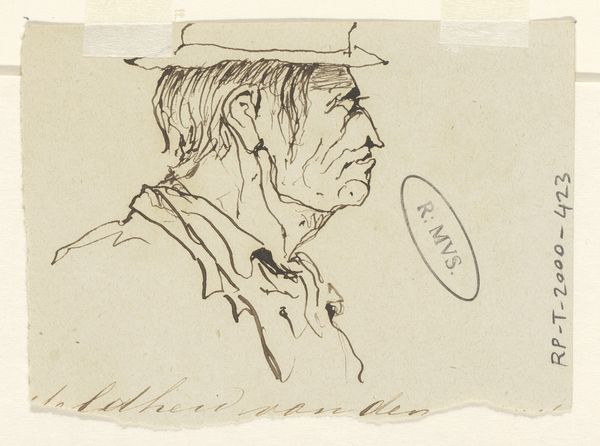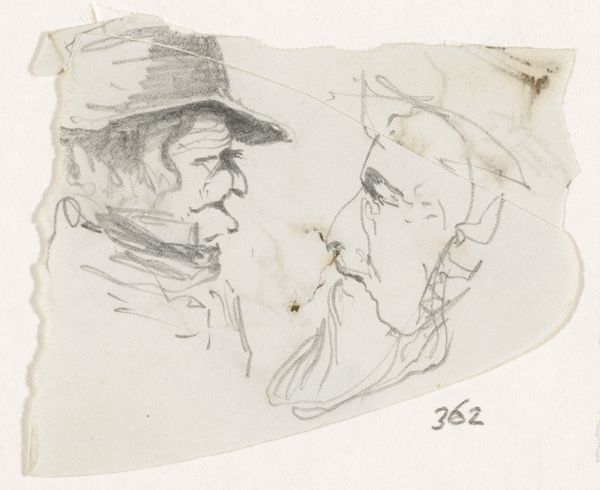
drawing, pen
#
portrait
#
drawing
#
comic strip sketch
#
imaginative character sketch
#
quirky sketch
#
caricature
#
personal sketchbook
#
idea generation sketch
#
sketchwork
#
ink drawing experimentation
#
sketchbook drawing
#
pen
#
storyboard and sketchbook work
#
sketchbook art
#
realism
Dimensions: height 94 mm, width 131 mm
Copyright: Rijks Museum: Open Domain
Curator: We’re looking at “Drinkende boer,” or “Drinking Farmer,” a drawing by Johannes Tavenraat, likely created between 1840 and 1880. It’s a pen drawing currently held in the Rijksmuseum. Editor: My first impression is…quirky! The sketch seems to capture a very specific, almost caricature-like moment. The lines are scratchy and energetic, giving the figure a dynamic presence despite being static. Curator: Absolutely. This drawing exemplifies the rise of Realism, portraying everyday life and people. Tavenraat's choice of a farmer, presumably indulging in a drink, situates this work within a broader narrative of rural life and labor, but also offers a glimpse into potential social issues tied to alcohol consumption and class. The text on the paper around the man could represent election outcomes and its effect on everyday peasants in Rotterdam. Editor: I agree with the Realist undertones, but I'm also drawn to the almost abstract quality in the hat. Notice the shapes are not precise representations. Instead, Tavenraat prioritizes capturing the volume and light, which also is an example of his skillful use of hatching to create depth and shadow. Curator: The farmer’s visible enjoyment, or perhaps the dulling of realities through drink, points to the artist’s interest in psychological realism. Who is he writing the ballot for? How does this action serve as a commentary on political engagement, class consciousness, and the often-overlooked role of the working class in broader society? Editor: An interesting point. His focus is completely internalized in that action of writing while drinking from the stein. His profile takes center stage and provides such emphasis, suggesting that the face acts a narrative composition. Even the scrawling lines give a kind of formal organization to the composition of the figure. Curator: Studying an artwork like this reminds us that representation is always an act of interpretation. This drawing could spark further exploration of intersectional themes—the politics of labor, the complexities of representation, or the subtle critiques embedded within seemingly simple scenes. Editor: I concur! I have learned how closely a seemingly spontaneous drawing, at its base components, demonstrates fundamental artistic ideas, techniques, and careful considerations of pictorial composition.
Comments
No comments
Be the first to comment and join the conversation on the ultimate creative platform.
